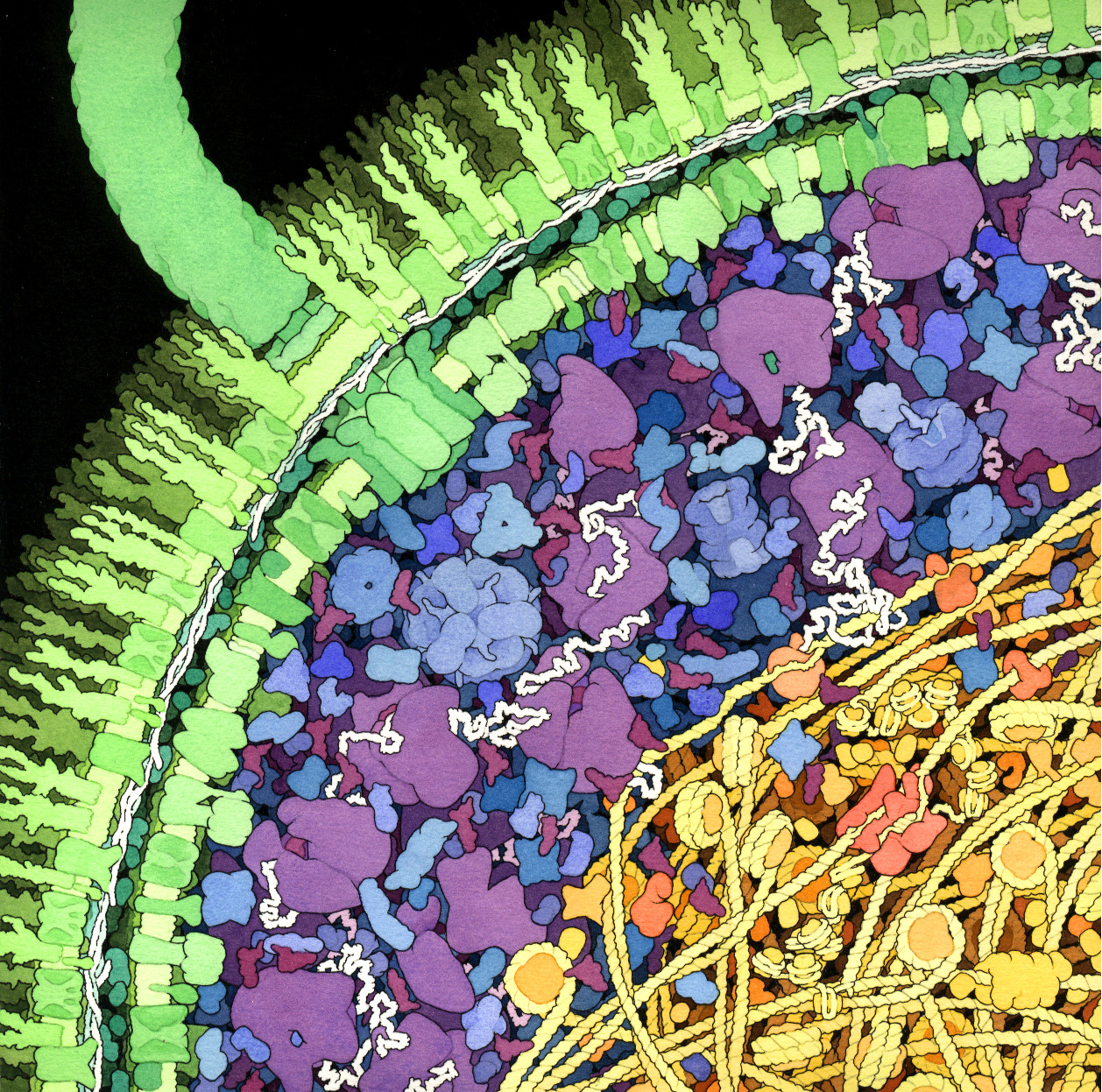Syllabus
Piazza
Sakai
Lectures
Homeworks
Links
Files
Quizzes
Questions
Click on an image to bring up a discussion of how the image
relates to Physics 414.
Welcome to Physics 414, a course
that discusses at a junior-level the exciting interdisciplinary
subject of biophysics. Biophysics broadly concerns trying to
understand biology in a quantitative way, using experimental
techniques, theories, and concepts developed from different areas of
physics such as statistical physics, nonlinear dynamics, polymer
physics, mechanics, fluid mechanics, optics, quantum mechanics, and
nanoscience. Biology and medicine in turn often suggest novel physics
problems or experimental challenges. Indeed, some of the greatest
unsolved questions in all of science involve biological questions of
much interest to physicists, e.g. how does a long one-dimensional
sequence of aminos acids (a protein) spontaneously fold over about a
second to form a biologically active enzyme that can enormously speed
up specific chemical reactions? How does life emerge from some
collection of molecules? How does behavior emerge from a network of
many interacting neurons?
Physics 414 is the first of a two-semester sequence of
undergraduate biophysics courses. 414 focuses mainly on the biophysics
of cellular and subcellular (molecular) structure and function, with a
particular emphasis on studying how diffusion, energy, and entropy
help to explain molecular and cellular structure and function. The
companion course Physics 415 offered each spring builds upon and
extends 414 to biophysical phenomena that span multiple time, length,
and energy scales, addressing questions such as how does information
obtained at the molecular level (say biomolecular sensors for
chemicals or light) lead to macroscopic behavior such as chemotaxis of
a bacterium or pattern recognition followed by movement of a person.
Further information about Physics 414 can be found from
the course
syllabus. Please also feel free to contact the course instructor,
Professor Greenside
at hsg@phy.duke.edu, if you have
any questions.





